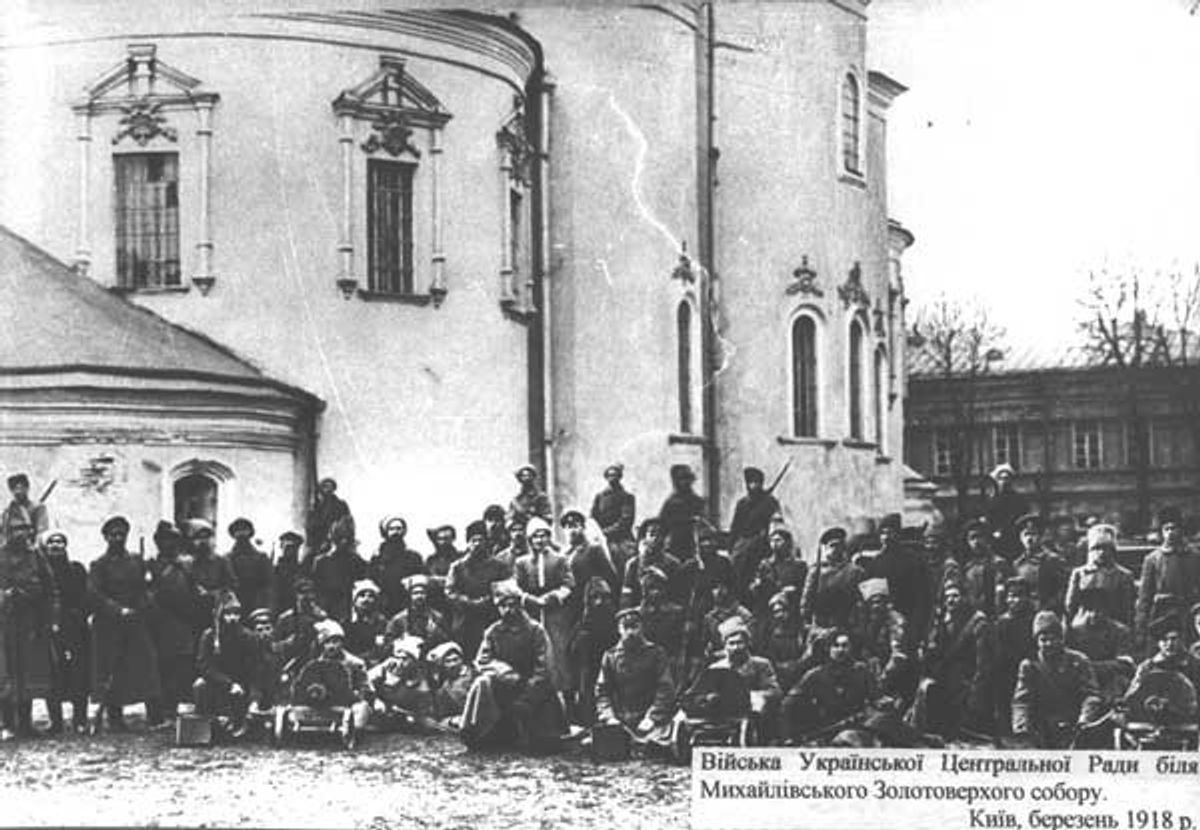In 2019, the Ukrainian Museum in New York mounted the exhibition Full Circle: Ukraine’s Struggle for Independence 100 Years Ago, 1917-21. More than 30 museums in Ukraine and the US participated, which underscored that Ukraine’s aspiration for a united, sovereign, modern and democratic European state has its roots in the Ukrainian Revolution of 1917-21. Immediately after the collapse of the Russian monarchy in early 1917, Ukrainians saw their chance to gain independence, and thousands came out into the streets to express that hope.
Through numerous documents and artefacts, the exhibition traced the development of Ukraine’s statehood: the formation of a government, state institutions such as a legislative body and an army; the creation of a national currency and the establishment of a banking system; and the promotion of education and culture, along with the formation of the Ukrainian Autocephalous Orthodox Church. In January 1918 an independent Ukrainian republic was proclaimed, and was then recognised as a legitimate government under the Treaty of Brest-Litovsk.
Although the republic was defeated by the Bolsheviks shortly after, the steps taken during that era were vitally important in the development of Ukraine’s statehood. Firm foundations were laid for the future establishment of the Ukrainian state after the breakup of the Soviet Union and Ukraine’s proclamation of independence in 1991.
An important factor in the 1920s was that, despite their victory, the Bolsheviks had tremendous difficulty establishing a stable regime in Ukraine. Each attempt was marked by having to make ever more concessions to national sentiment, such as initiating a policy of Ukrainisation that introduced the Ukrainian language at all levels of government as well as in educational and cultural activities. This stimulated the Ukrainian cultural renaissance of the 1920s, marked by intense activity in all aspects of cultural life.
This cultural resurgence represented so great an advance that it became known as the “golden era” in Ukrainian literature and the arts. All spheres saw a rise of innovative modernist figures in Ukraine: Les Kurbas in theatre, Alexander Dovzhenko in cinema, and Kazimir Malevich, Oleksandr Bohomazov, Anatol Petrytskyi, Aleksandra Ekster, Vadym Meller and many others in the visual arts. Many of the artists were founders of the Ukrainian State Academy of Art and taught there.
Later, due to the brutality with which this resurgence was repressed by Stalin, the movement became known by the more sombre name Rozstriliane Vidrodzennia (executed Renaissance). Most of the Ukrainian elite, including prominent cultural figures, were executed or exiled to Siberia. Churches and architectural landmarks from the 11th, 17th and 18th centuries were destroyed, erasing symbols of cultural and national identity.
The terror famine
This defining period in Ukraine’s history culminated with the Great Famine of 1932-33, known as the Holodomor (death by starvation). On Stalin’s orders, Ukrainian farmers were stripped of their land and forced onto collective farms.
Impossible grain quotas were imposed, with most of the grain destined for export. Enforcers swept through homes, seizing any grain that had not been handed over. The Ukrainian countryside became a vast death camp. It is estimated that three to four million people died; some estimates are much higher. The Soviets denied the famine was taking place.
Does this sound familiar? Ukraine’s 1,000-year-old cultural heritage is being destroyed. The territory of today’s Ukraine was home to highly developed civilisations, among them the Trypillians (5400BC-2500BC) and the Scythians (700BC-300BC), whose exquisite gold artefacts were found in burial mounds on the Ukrainian steppe. The Ukrainian capital Kyiv was founded around 1,500 years ago, and the Kievan-Rus period left an astonishing legacy, including extraordinary frescoes and church architecture.
Each generation has contributed in every sphere to the rich cultural heritage of the nation. It is a nation whose people have inspired the world with their courage, their determination and their fierce love for their country—and they are ready to defend their country to the very end in the same spirit as generations before them.
• Maria Shust is the director of the Ukrainian Museum in New York


